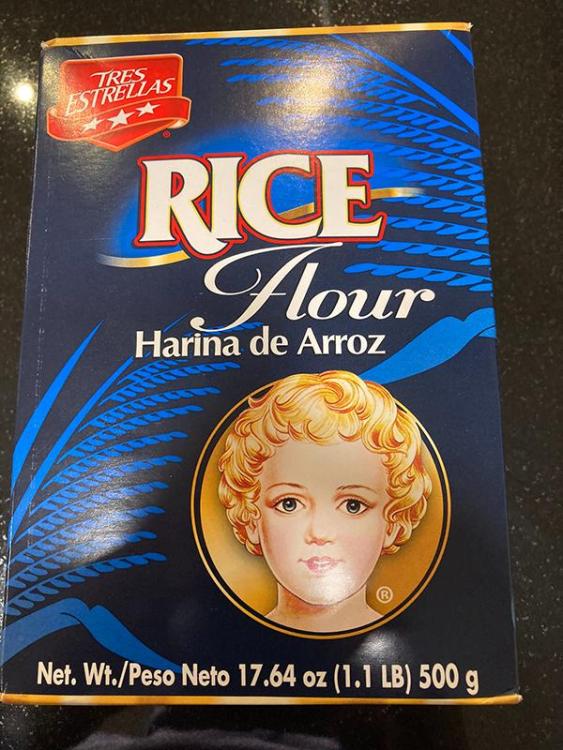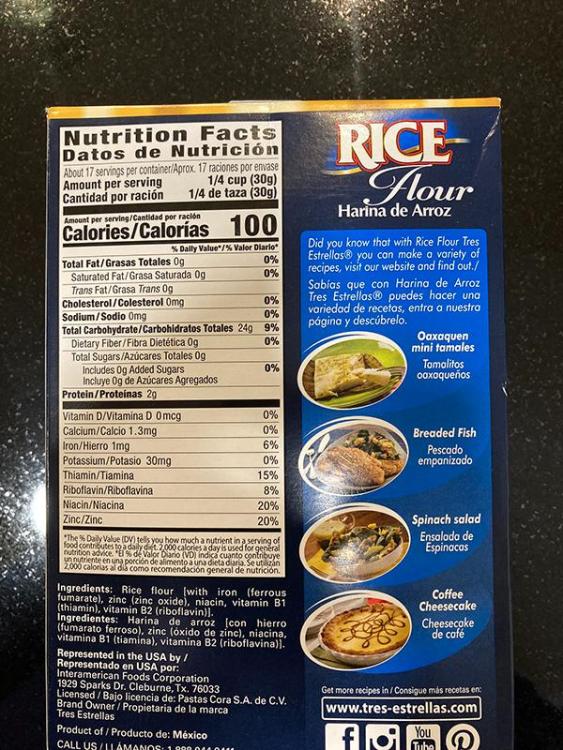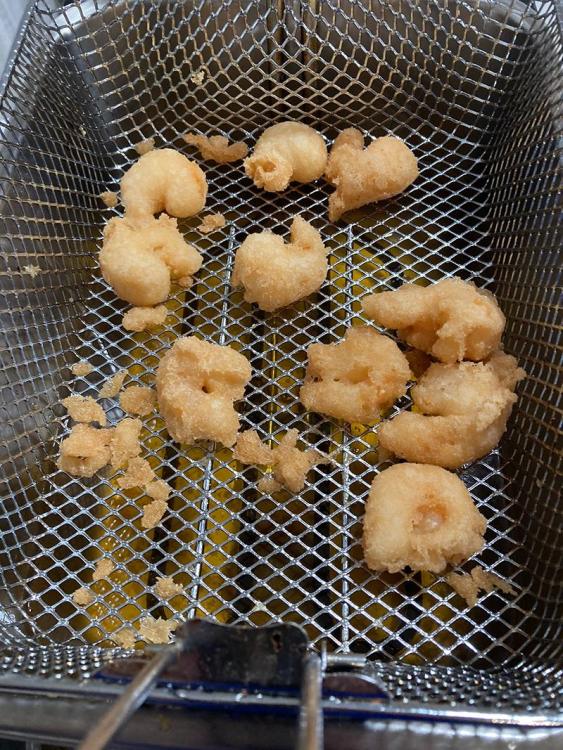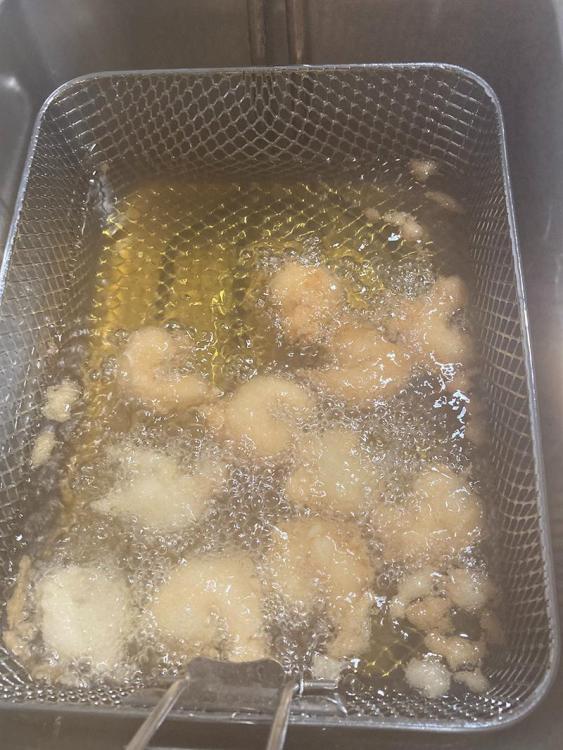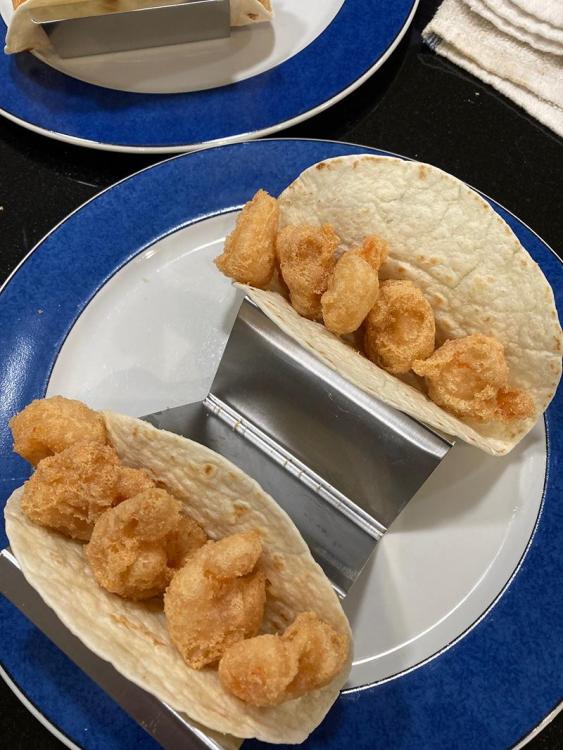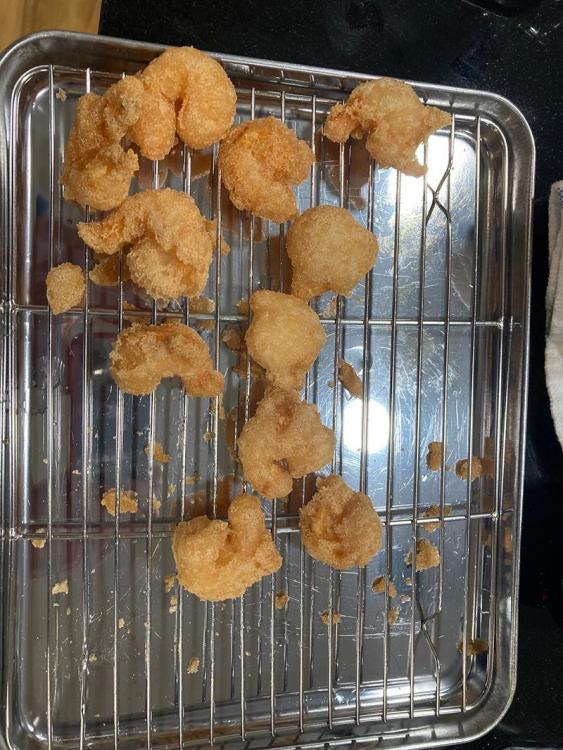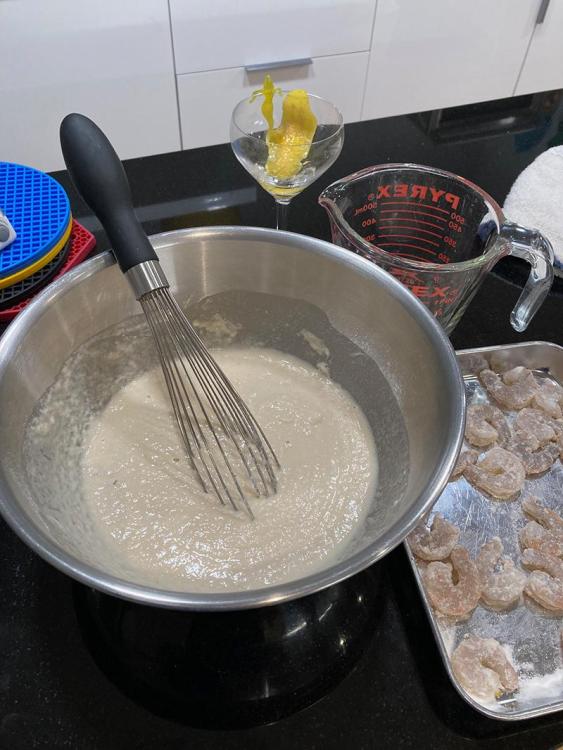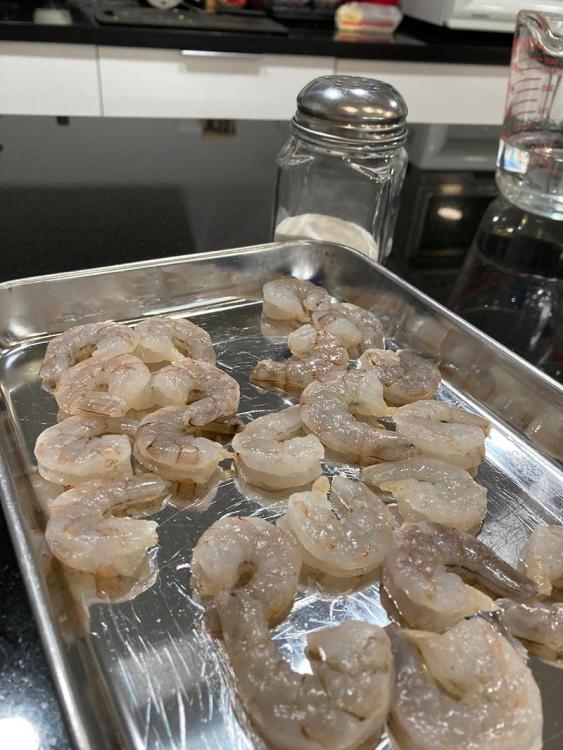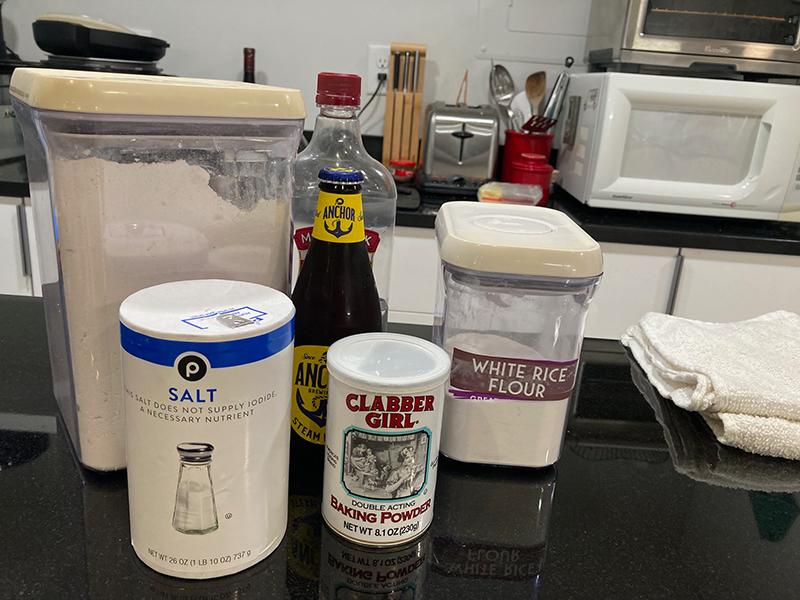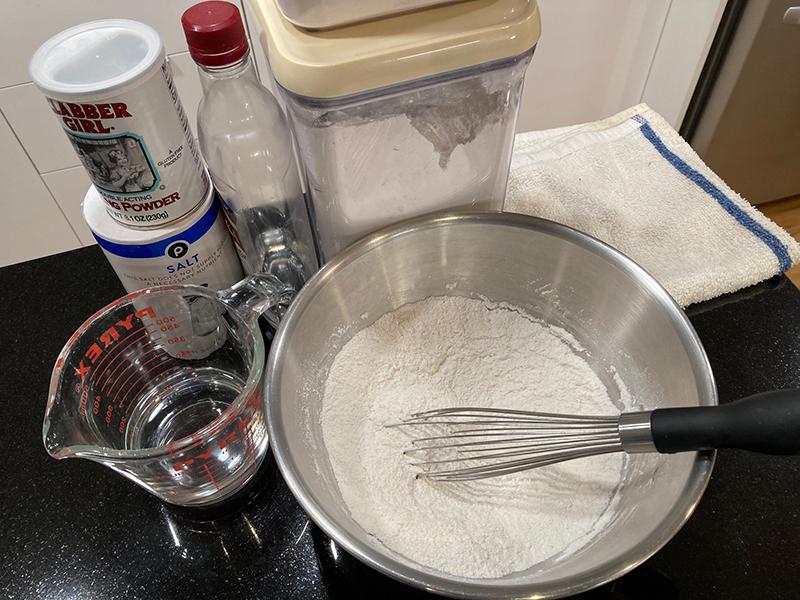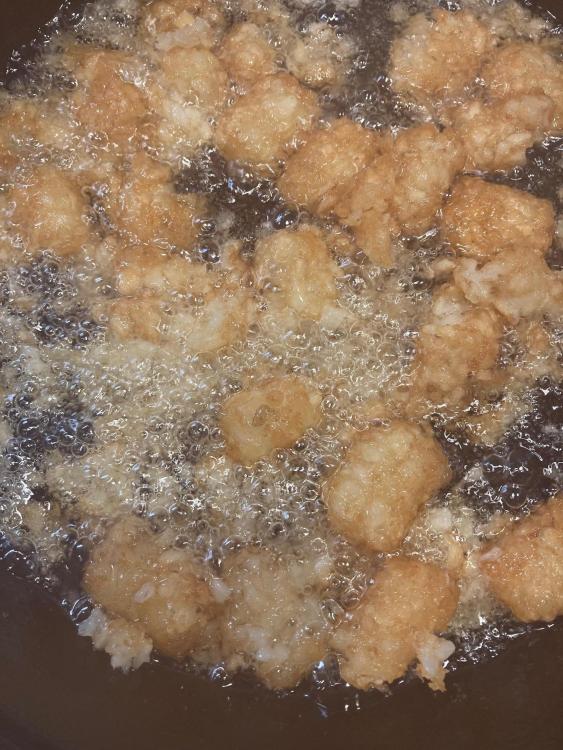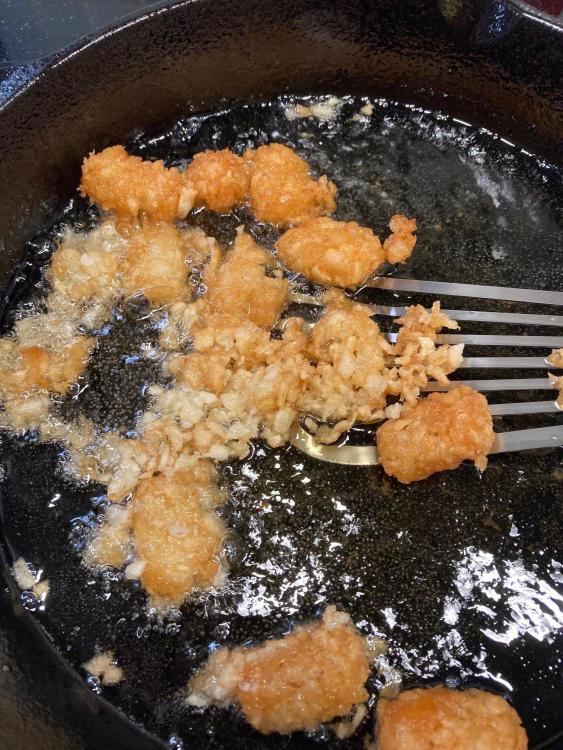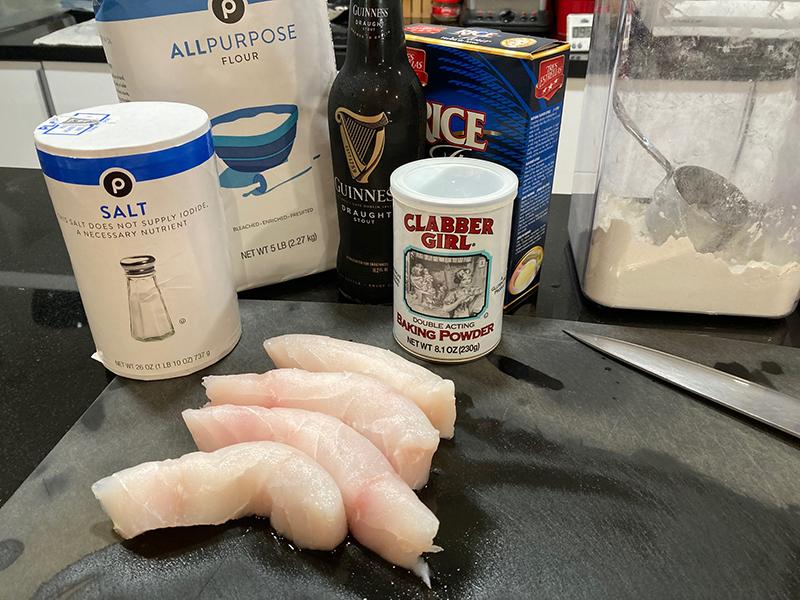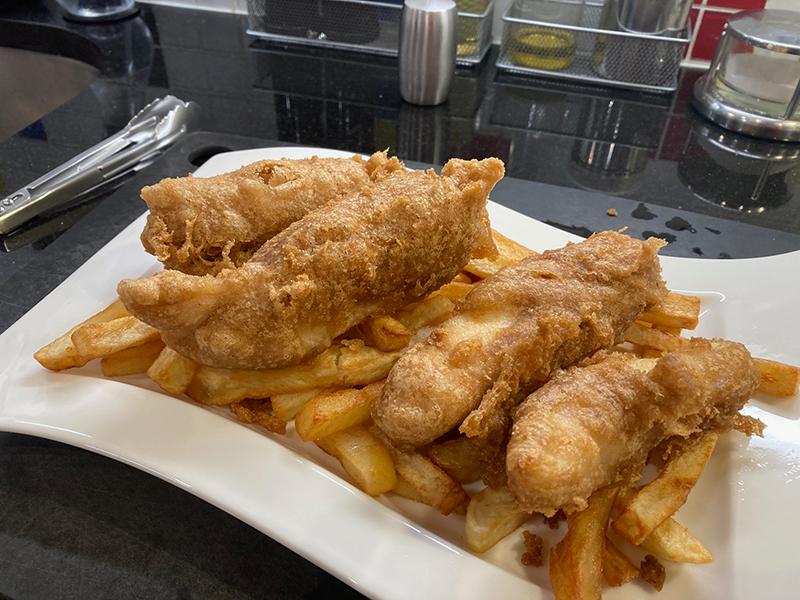-
Posts
8,089 -
Joined
-
Last visited
Content Type
Profiles
Forums
Store
Help Articles
Everything posted by Dave the Cook
-
You didn't by any chance keep the leftovers in the fridge, in plastic?
-
Woo! I am very impressed. Any tasting notes re: russet v. Yukon gold?
-
A few comments: Salamander: not a great cost-to-benefit ratio. I'm with @gfweb. A good countertop oven will do. I'm also with him on the Miele steam oven. We don't have one, but the place where we ran cooking classes sold Miele appliances. I was not a fan of their basic wall ovens, but the steam oven was pretty impressive. Frankly, I'd be concerned about getting home service for a Rational oven, anyway. Rolling butcher block: I quote @Fat Guy from my first topic on kitchen renovation. I think it's still true: "I'm negative on anything on casters or anything that swings up or out. If you're a high-impact cook those types of things just aren't stable. People will swear up and down that they are -- they have this special kind of locking caster or this one is really much more stable than the norm -- but if you pound and hammer like a restaurant cook you'll wreck those pieces pretty quickly." Pot filler: I would never install a water source that wasn't over a drain. Maybe it's just me, but it seems like an accident waiting to happen. If necessary, get an extra-long hose on your sink faucet or spray head, and make sure it retracts properly. Fridge: In my experience, your refrigeration needs will expand to fill your refrigerator. As for thinking ahead, you'll find a number of members here who have SubZero refrigeration and are happy with it. I can only say that I've known several people IRL who owned SZ. Not one of them was happy about it. They a) are expensive to the point of embarrassment; 2) may be large on the outside, but they're pretty small on the inside; 3) are unreliable; 4) are expensive to repair, when you can get someone to service them. As for layout, the work triangle is one good theory, but it often can't be applied, or won't fit, or doesn't easily adapt to your work habits, plumbing or electrical layout. Think about it, but being dogmatic doesn't necessarily pay off.
-
Sorry to disappoint, but I have no deep knowledge of Mexican, Central American or South American food, other than what I pick up here and there. I can sum up my experience so: usually, I like to eat it. Looking at recipes on the product's website, It looks like rice flour is used pretty much the way other cuisines use cornstarch: as a thickener, as bulk starch, and as a coating. I will note that the company got its start as a producer of wheat flour.
-
-
For me, it's not just neatness. Thanks to spoon rests, I always know where the spoon/tongs/giant tweezers will be. With two cooks often in the kitchen, it's easy to lose track of where things might be. But with spoon rests (I admit that we have and use three), I don't have to search the counters or the stove top (both usually cluttered with mise or equipment) to find what is currently in use.
-
I'm not sure anyone here needs a pictorial lesson, but I'm generally in favor of photos, and there seemed to be some lingering questions about the batters we use. So what follows is a more or less step-by-step illustration of making the first (more delicate) batter, this time for fried shrimp tacos. First, the mise. Ingredients: a/p flour, fine salt, vodka, beer, rice flour. Don't use your good vodka here, it would just be wasted. Besides, it's fun to step up to the counter and demand, "A pint of your cheapest vodka, my good man!" Also, I remember saying that all you needed was an American-style lager, and yet here we have Anchor Steam. While Miller Lite will work (heck, club soda or Fanta Orange will work, if you like that sort of thing), the more flavor in your fizzy stuff, the better. Next, combine the dry: Add the wet: We now pause for a poetic interlude, courtesy of Ogden Nash: There is something about a Martini, A tingle remarkably pleasant; A yellow, a mellow Martini; I wish I had one at present. There is something about a Martini, Ere the dining and dancing begin, And to tell you the truth, It is not the vermouth— I think that perhaps it's the gin. A-hem. I usually load up a shaker with rice flour to dust the raw shrimp (after seasoning them) Fry the battered shrimps at 375°: This (the lighter) makes superior crunchy bits, if that's of interest to you. (It should be. What's wrong with you?) The shrimps are loaded into toasted flour tortillas (this photo shows the final texture of the batter very well). Unlike most other applications, we don't measure the protein by weight; here, it's by numbers; five 21/25 shrimp per taco. Fully dressed, with salsa roja, toasted garlic sauce and shredded romaine (usually iceberg, but we had tons of romaine): C'est tout!
-
Over in the Camping Princess Style topic, I encouraged Smithy to shallow fry her tots rather than bake them: It did not go well for her: As is likely to happen around here, many suggestions followed. Smithy even experienced success: I can't track it down, but I'm sure there was discussion about how a good cook like Smithy could have such trouble with a mere tot. (Maybe that only occurred in our kitchen. And perhaps only with myself.) Then this happened. To me us: You can see the tots simply disintegrating. The result: Look familiar? But now I have an explanation. Sort of. Once the lockdown took hold, peeps worried about paper goods and staples like flour. Not in our house. We worried about tots. They became quite scarce. Our preferred brand, which is the store (Publix) brand was not to be had. So we switched to Ore-Ida. That led to the result you see above. Then the supply chain problems eased, and we could get Publix tots. As before, they cooked up just fine. Soon, however. the Supply-Chain Gods cracked down again. This time, no Publix, no Ore-Ida, either (but that was okay with us since they didn't work). We found a third brand, Lamb-Weston, whose offering is called "Super Crispy Tots." Or maybe the brand is Grown in Idaho. The packaging and marketing is confusing. Anyway, it doesn't matter, because, for us, these sucked, too. Then, when we were shopping the other day, there was one lonely bag of Pubix-brand TaterBites (their name). We snatched them up, and that night we fried and consumed perfect tots. I don't know who makes the Publix product*, but, for shallow frying, it is definitely different and definitely superior. And now I'm guessing, but I think Smithy switched brands between her disappointments and her success. Finally, at least here in Atlanta, tots remain scarce (and even now, they're blaming supply-chain issues). We've taken to stockpiling. * I note that many grocery chains have store-brand product, and many of those are called "TaterBites." I don't know if they're related to what Publix sells, but I do know that Ore-Ida has trademarked the name "Tater Tots," and as far as I can tell neither "Tater Bites" nor "TaterBites" are likewise protected. You may or may not find this either interesting, or perhaps suspicious.
-

Tell us about the popular foods you’ve never tried
Dave the Cook replied to a topic in Food Media & Arts
Ramps. -
I'm with rotuts. Two is almost as easy as one, and extra smoked chicken is a blessing.
-
Bob's seems to be a national brand. We can get it in Atlanta, and my SIL in Ohio has no problem sourcing their stuff. Their white rice flour is good and dependable. It's also expensive -- about twice what we pay for the blue-box stuff (pictured here) we get at the local mercado. It's only 2 -3 bucks in absolute terms, but you know how things add up. Pretty soon you're talking about real money.
-
Sure, that's why you take them out. But then why not use the ground form to begin with? Dude. My mother told me about bay leaves. I do not need the story to which you allude intertwined with thoughts of my mother. This kind of makes sense. My mother would have gotten the bay leaf lore by way of her childhood cook/nanny, who, come to think of it, would have been a bit prone to believe in a tale that involved blue skin. And blood.
-
Ground, huh? I was brought up to believe that the reason one used whole bay was so that one had to pluck it out of the finished dish, because to actually ingest bay would lead to . . .. issues. Obviously, it's not (entirely) true, but is there any basis at all for this?
-
The JAZ™ Method for French fries (my paraphrase) I didn't develop this method, although I have benefitted from the results. Janet ( @JAZ) did all the work. Any errors in the following are mine, not hers. I am pretty sure she relied on Kenji Lopez-Alt, the Kitchn, and a few other resources to cobble this together. Buy as many russet potatoes as you want to eat. One large (~a pound) serves 2 fry lovers. Peel potatoes and cut them into planks about 3/8" wide, then into ~3/8" fries. As you cut them, drop the fries into a big bowl of water to prevent discoloring. Bring a large pot of water to a boil. Add the fries and cook them until they're not quite done --- about 6 minutes. They should still have a tiny bit of snap in their centers. Drain the potatoes from the boiling water. If you have a salad spinner, now's the time to use it. Dump the potatoes in. Lift the basket out of the bowl and pour out the water. If you don't have a salad spinner, jump to step 7 (but really, consider getting a salad spinner). Put the basket back in the bowl and spin to dry the potatoes as much as possible. Put a close-fitting rack into a sheet pan. Cover the rack with two or three layers of paper towels, or a clean kitchen towel. Spread the potatoes on the towels, then add another layer of towel(s) on top. The point here is to get the fries as dry as possible. Remove all the paper towels and redeposit the potatoes directly on the rack. Refrigerate overnight. Fry at 375° until nicely browned. Drain on paper towels. Season to taste while the fries are still warm. Now comes the confession. The fries in the photo above were fabulous. But we've done fries twice since then, using that same method, with -- let's say -- variable results. I watched Janet make them all three times, and I fried them all three times. We've been consistent and diligent. But the fact remains that the second batch was not as good as the first, and the third was not as good as the second. I've concluded that it's the potatoes. They vary in ways that consumers can't easily monitor, especially age, carbohydrate and moisture content. Large potato concerns like Ore-Ida and McDonalds can (and I'm sure) do monitor and manage these things. I'm pretty sure that there are programs for selling potatoes to restaurants that do the same thing.
-
I'll gladly describe the JAZ™ fry method tomorrow, when I have a little more time. It's not complicated, but requires explanation. If you need to shop in the meantime, all you need is a couple of russet (aka Idaho) potatoes and a sheet pan with cooling rack We use half-size, roughly 13" x 18". A salad spinner is helpful but not essential, as long as you don't mind sacrificing a few paper towels. Weight or volume of rice flour or cornstarch doesn't matter much. If the two substances differ in the quantities we're talking about, I'd be surprised. I forgot that you should salt the fish before dusting with rice flour/cornstarch. It's not a chemistry thing, it's just for flavor.
-
All excellent questions. In order: Cornstarch is a decent sub (1 for 1) for rice flour. Having said that, we get ours at a Hispanic market, one of which I'm pretty sure you're near. It's for dusting the target food before dipping in the batter. It helps the batter adhere. Dust the slightly wet fish with a bit of starch, and you get a sticky surface for the batter. Yes, it seems a bit nonsensical, but it works. That's a six-ounce grouper filet there. Four pieces means 1-1/2 ounces per piece, right. (Please check my math.) Same oil, but because the fish holds so well, it was a no-brainer to do the fish first, then the fries. BTW, those fries are per the JAZ Technique™, but store-bought frozen fries are allowed. (I'd add more salt to the first recipe. Oops.) You're sort of there, but the real difference is the lack of 80-proof vodka, which would evaporate much faster than the extra beer, giving you a lighter result, albeit without as much flavor. To put it another way, in the second recipe you're trading the lightness of vodka for the sturdiness and potential flavor of beer. By the way, in the first recipe, you could use any 80-proof spirit, like gin or rye or rum or tequila. though the flavor will differ a bit (bourbon or cognac/brandy are not recommended). I've never tried it, but I think @Margaret Pilgrim is right; it should be fine, gluten-wise. Flavor, I dunno.
-
I agree that MSG was shunned (and blamed for more than a few things that weren't its fault) for a while. But I don't think it's ever been unavailable. If you remember Accent All Natural Flavor Enhancer, you're remembering MSG. However, I doubt that it, or undisguised MSG, was responsible for the kick in your Mom's recipe. MSG doesn't have much flavor on its own, if anything, it's got a sort-of meaty ambience. It really does enhance, rather than directly flavor food. If vinegar isn't working for you, maybe you could try lemon juice, wine or sour salt (eG-friendly Amazon.com link), which isn't salt at all, but citric acid.
-
A while back, we were discussing bang-bang shrimp, and I tried to tempt you into trying something different, but it wasn't on your dance card then. Anyway, I sense your time on the road is growing short and you might want to give deep frying one more shot. If you want to try it, here's the deal: it's based on Heston Blumenthal's fish and chips, filtered through a Harold McGee column in the NYT. The idea is that what makes fried coatings chewy and/or tough (another word for durable, but that's for chicken or chicken-fried steak) is gluten. It's also demonstrated in Kenji Lopez-Alt's pie crust, as featured by ATK. The trick is to prevent gluten formation. For this, the recipe uses two methods: 1) start with as little protein as possible. You need some to provide structure to form the coating, but in many recipes, you can replace half the wheat flour with a non-wheat, protein-poor flour, like cornstarch or rice flour; 2) replace some of the water with alcohol. This does two things: first, alcohol interferes with gluten formation, and second, it evaporates at a lower temperature than water, relatively speaking, so you don't have to use up heat to get rid of water. So here's what we use: 3/4 cup (90 g) white rice flour, plus a couple tablespoons for dusting the food 3/4 cup (85 g) all-purpose flour 1/2 teaspoon baking powder 1/2 teaspoon fine salt 3/4 cup (180 ml) vodka 3/4 cup (180 ml) club soda or mild beer (an American lager is fine) Fried at 375°, This makes a light, feathery coating. We use this batter for shrimp destined for tacos. Even leftovers, which are usually very disappointing when it comes to fried fish, are crispy. After a (very) little experimentation, we revised to make a slightly more substantial coating: 3/4 cup (90 g) white rice flour, plus a couple tablespoons for dusting the food 3/4 cup (85 g) all-purpose flour 1 tsp salt 1/2 tsp baking powder 1-1/2 cups (360 ml) beer (here, the flavor of the beer matters a lot more) If you didn't believe me about the gluten, the differences in those two recipes (especially the liquids) should convince you. We use this batter for fish and chips. Leftovers are better than average, though not as good as the previous recipe.
-

What happened to Lea & Perrins White Wine Worcestershire Sauce?
Dave the Cook replied to a topic in Kitchen Consumer
A lot of people believe that tamarind is indispensable in making Worcestershire. I have three things to say about that: I was working from a recipe that didn't include tamarind, and didn't apologize about it. The original recipe came from Emeril Lagasse, and I'm not sure he's ever apologized for anything, but there you are. When all was said and done, the product tasted like Worcestershire sauce. From this I conclude that the inclusion of tamarind may be authentic but it is not mandatory. At the time, I didn't know about tamarind, and a) probably couldn't have easily gotten my hands on it, though today I could tell you of at least four local sources; b) I wouldn't have known how or how much to incorporate into the recipe. -

What happened to Lea & Perrins White Wine Worcestershire Sauce?
Dave the Cook replied to a topic in Kitchen Consumer
I suggest you make your own. Here's a recipe to get you started: What's dis here sauce? There's a related topic here. It's kind of sweet to start with (sweeter than L&P, anyway). Also, I'm not sure where the sauternes would fit in. Maybe instead of one of the vinegars? -
With great sadness, we note the passing of Margaret M. Rovai, or, as she was known around here, maggiethecat. Maggie was one of our earliest members and cheerleaders. She wrote for, and edited the Daily Gullet, publishing and/or editing the early work of food-literature luminaries such as Tim Hayward, Joseph Carey, Monica Bhide, Todd Price, Andy Lynes, Janet Zimmerman, (the little-known fiction of )Jay Rayner, Nina Planck, Darra Goldstein and JJ Goode, among many others -- not the least herself, whose contributions stand among the best in the Daily Gullet offering. She also invented and judged the Daily Gullet Literary Smackdown. To many of you, that all may sound like ancient history, and measuring in internet time, it is. But if you're reading this, you owe her an inestimable debt. eG is only here because amazing people like Maggie were around to make sure it happened. For those of you who were not FB friends with Maggie, I'll add her daughter Honor's tribute: RIP, Maggie.
- 21 replies
-
- 22
-

-
Looks good. In Germany, does it come with waffle plates? Because in the US, it doesn't. Based on what I see, they don't exist.
-
As long as we're continuing is the shrimp vein (ha!), are you done with deep frying for a while? 'Cause if you're not, I've got a couple of ideas to run past you.
-
You don't have to search very far to find oven-baked "roux," where the flour is cooked, by itself, in a low oven for a long time. It works fine, it gives you most of the flavor you need, it's hard to screw up, AND IT TAKES FOREVER. That's because air is not as good a conductor of heat as fat is. So, the oven method is very controllable, at the expense of time. If we want to speed things up, we have to introduce a liquid that can exceed the temperature at which starch browns. That mean water is out, because it will just boil away at the requisite temperature. Let's use fat -- butter or oil. The fat conducts heat into the starch much more efficiently. Once it's been combined properly, it also keeps each granule of starch separated from every other granule (please disregard the fact that wouldn't be necessary if we weren't introducing a liquid like oil or melted butter). Since it's a fat, it probably picks up a flavor note or two -- it might even have some flavor of its own. This is a proper roux, as classically defined: fat and starch combined for purposes of flavor and thickening. Most of the flavor is in the starch, though. Once the fat has done its job by protecting the starch, can't we just discard it? Yes, yes we can. You should realize though, that if you don't stir that fat back in, it's not a roux any more. It's just browned flour.




